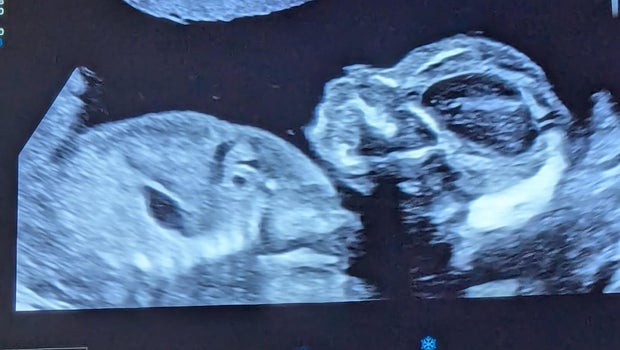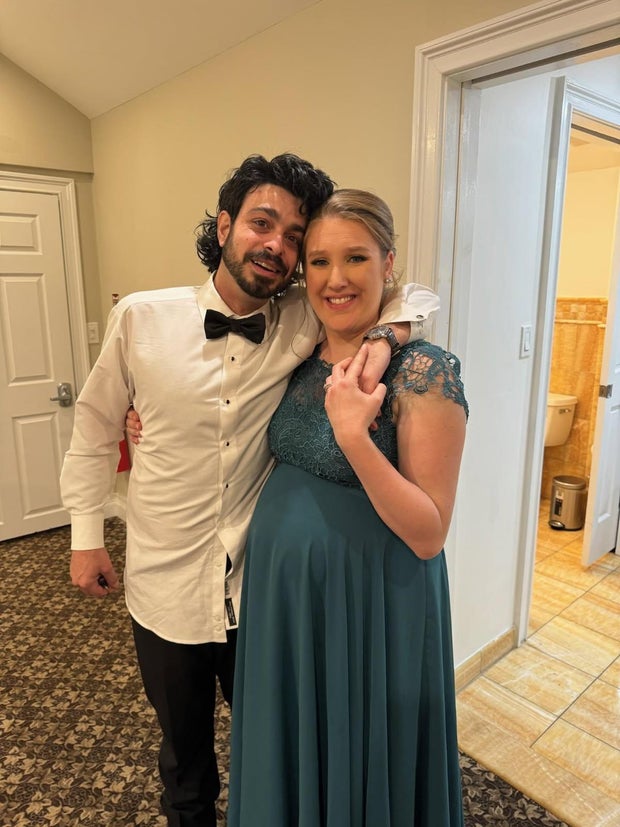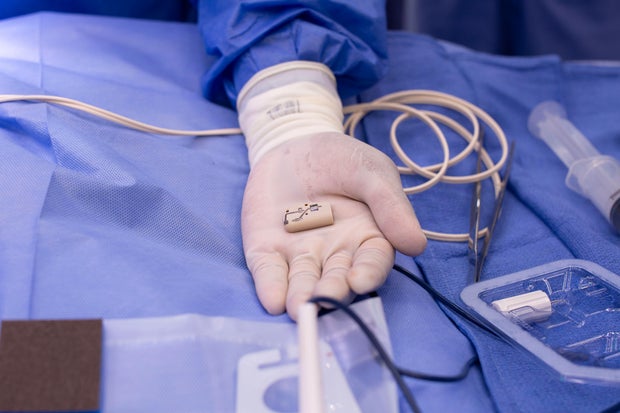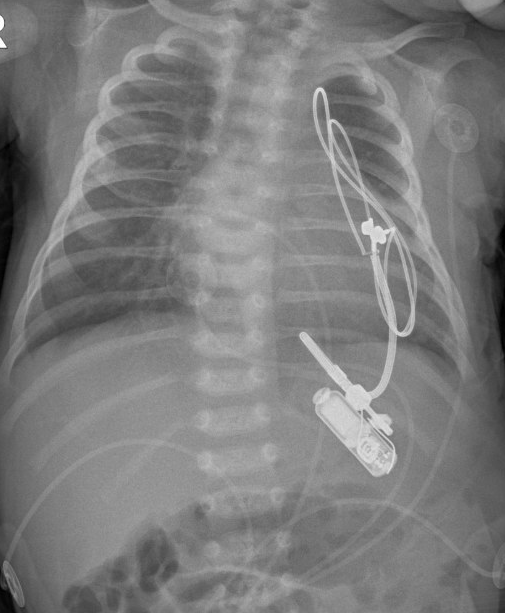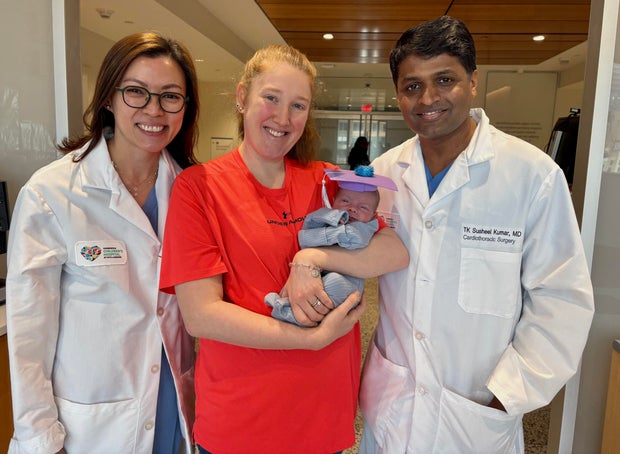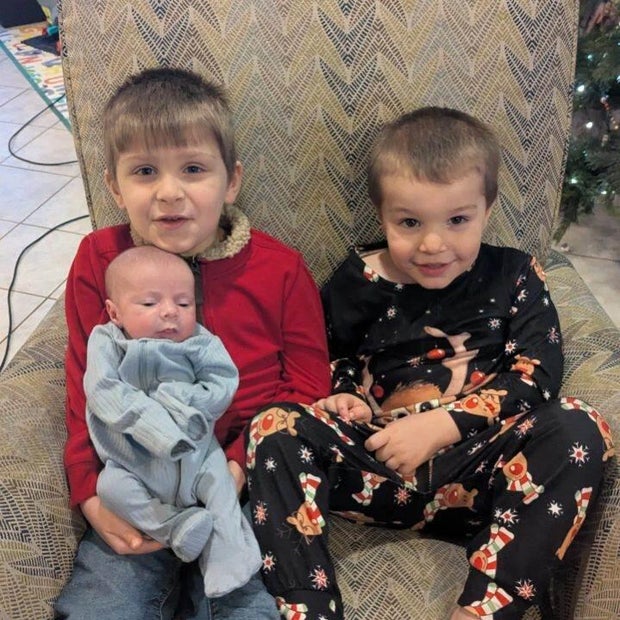When Sarah and Michael Oliveri went to their 20-week ultrasound for their third pregnancy, they thought to knew what to expect. Their previous visit had been stressful — doctors had detected an abnormality at 16 weeks — but a blood test came back clear. They believed the 20-week scan, taken in August 2024, would continue to show everything was fine.
But as the ultrasound went on, doctors “kept kind of going over the heart,” Sarah Oliveri told CBS News.
“They told me in that room that there could potentially be something wrong, and they were sending me down the hall to the cardiology department,” she said.
Sarah Oliveri said she and her husband went to the cardiology department “nervous,” but trusting their doctors to provide care. When they met the cardiologist, they were told their unborn child had a heart block. It was a condition they had never heard of before.
NYU Langone / Hassenfeld Children’s Hospital
“They told us it was serious, and there was some fear that we could potentially lose him,” Sarah Oliveri said. “But we always, from the very beginning, believed that he was going to be OK.”
What is heart block?
A heart block means that the heartbeat’s signal is not moving from the upper to the lower part of the organ correctly. It can cause a slowed or skipped heartbeat. Depending on the stage of the heart block, the heartbeat may only get through sometimes. In more severe cases, the heartbeat may not get through at all. Heart block can cause low blood flow to the entire body and symptoms like nausea, dizziness and chest pain.
The Oliveri baby had a complete heart block, said NYU Langone pediatric cardiologist and electrophysiologist Dr. Reina Tan.
Tan did not diagnose the condition but joined the treatment team when Sarah Oliveri was around 32 weeks pregnant.
Oliveri family / NYU Langone
Often, heart block is treated with a pacemaker, which regulates the heart’s rhythm. Such devices are rare in children. Only about 1 in 20,000 babies are born with heart block, and of those, Tan said that only 20% have a pacemaker implanted shortly after delivery.
“It’s always a question of timing as to when you would need it,” Tan said.
Adapting a pacemaker for newborn use
While in utero, the Oliveris’ baby wasn’t showing signs of distress, but when he was born on Dec. 5, 2024, he had a dangerously low heart rate. Even as the couple celebrated the birth of their third child, named Michael, doctors determined he would need a pacemaker as soon as possible.
“He was at a very high risk of not making it,” said Tan.
The baby — nicknamed Mikey — was taken to the Hassenfeld Children’s Hospital’s Congenital Cardiovascular Care Unit, and eventually intubated. Pediatric heart surgeon Dr. T.K. Susheel Kumar placed temporary wires that would simulate the effects of a pacemaker to keep his heart rate up.
Because so few babies are born needing a pacemaker, there are very few options for newborns in need. Babies must weigh between 6.5 and 8 pounds before they can receive a standard pacemaker, Tan said. At 5.5 pounds, Mikey was too small.
Instead, Tan turned to a pacemaker called Micra, made by the biotechnology company Medtronic. That pacemaker is about the size of a vitamin and weighs as much as a penny, Tan explained, but it was still too large for him. A pacemaker that is too large can lead to “more complications” in patients, Kumar said. It can move around the body, or the thin wires connecting it to the heart can break.
Haley Ricciardi
Tan and other members of the pediatric heart team filed for emergency approval to use an adapted version of the device that was suitable for babies. It’s the smallest pacemaker in the world. Only about 50 such devices have ever been implanted in the United States. Kumar said the adapted version is inserted and placed over the heart with just one small surgical incision during a 75-minute procedure.
The day he was born, Mikey was approved for the adapted pacemaker. On December 17, he was taken into surgery.
NYU Langone / Hassenfeld Children’s Hospital
Thriving after surgery
After the surgery, Mikey stayed in the pediatric cardiovascular care unit for another few weeks, receiving antibiotics to ward off any infection, and being closely monitored. On Jan. 2, 2025, he was discharged. Photos from the day show the month-old infant wearing a graduation cap and blue onesie.
NYU Langone / Hassenfeld Children’s Hospital
Since his discharge, the family has returned to the hospital multiple times for follow-ups.
In late January, an EKG and check-up showed his heart was operating normally. Those check-ups will take place every other month, Tan said. The Oliveris also has a device at home that “basically communicates with the pacemaker,” Tan said, and doctors also review data from that. In several years, the battery on the pacemaker will need to be changed, and at some point, the device will need to be exchanged for a larger option.
Oliveri family / NYU Langone
But for now, Mikey is thriving at home with his older brothers, aged 3 and 5. At over two and a half months old, he’s “doing really well,” their mother said.
“He’s doing really well. He’s doing great,” she said.

